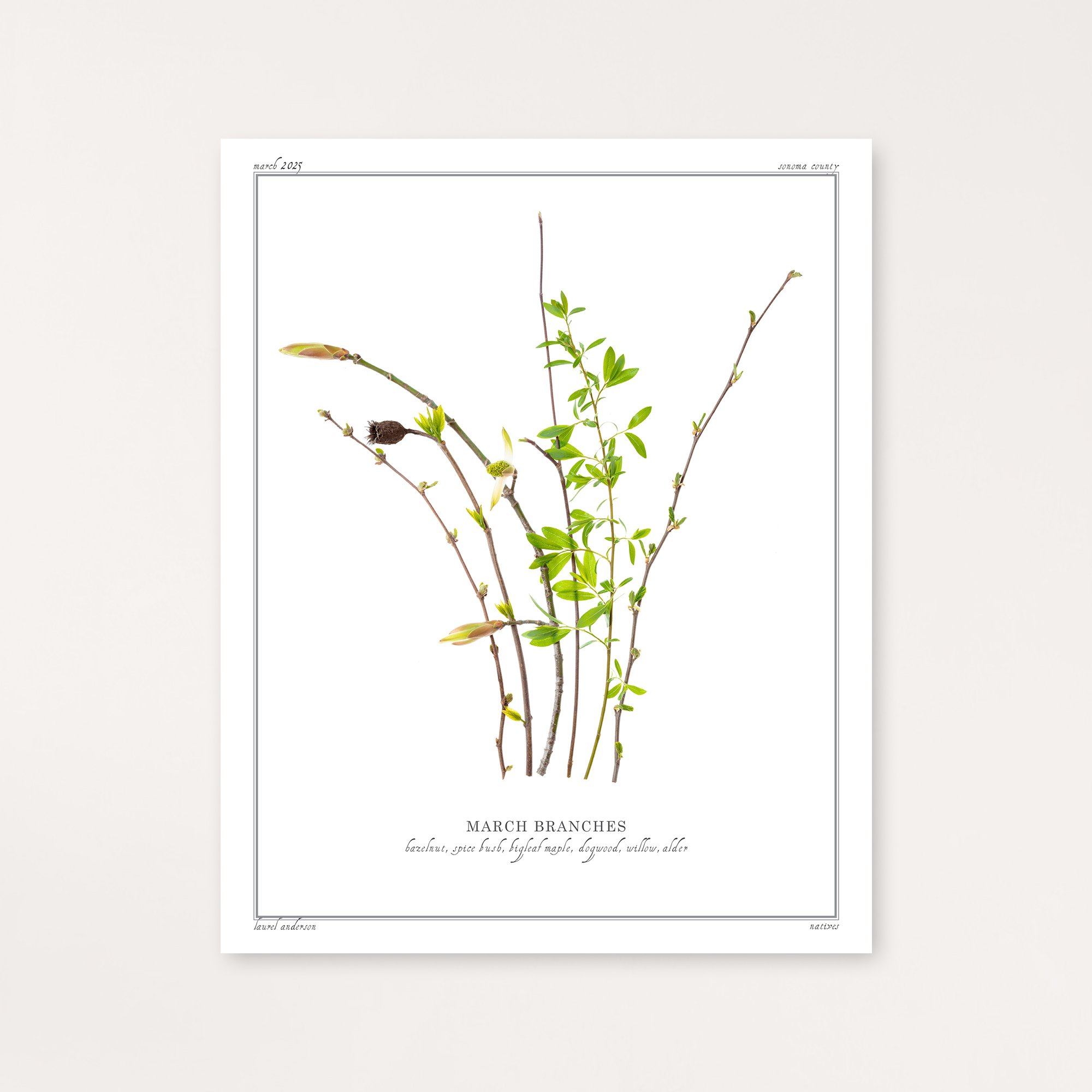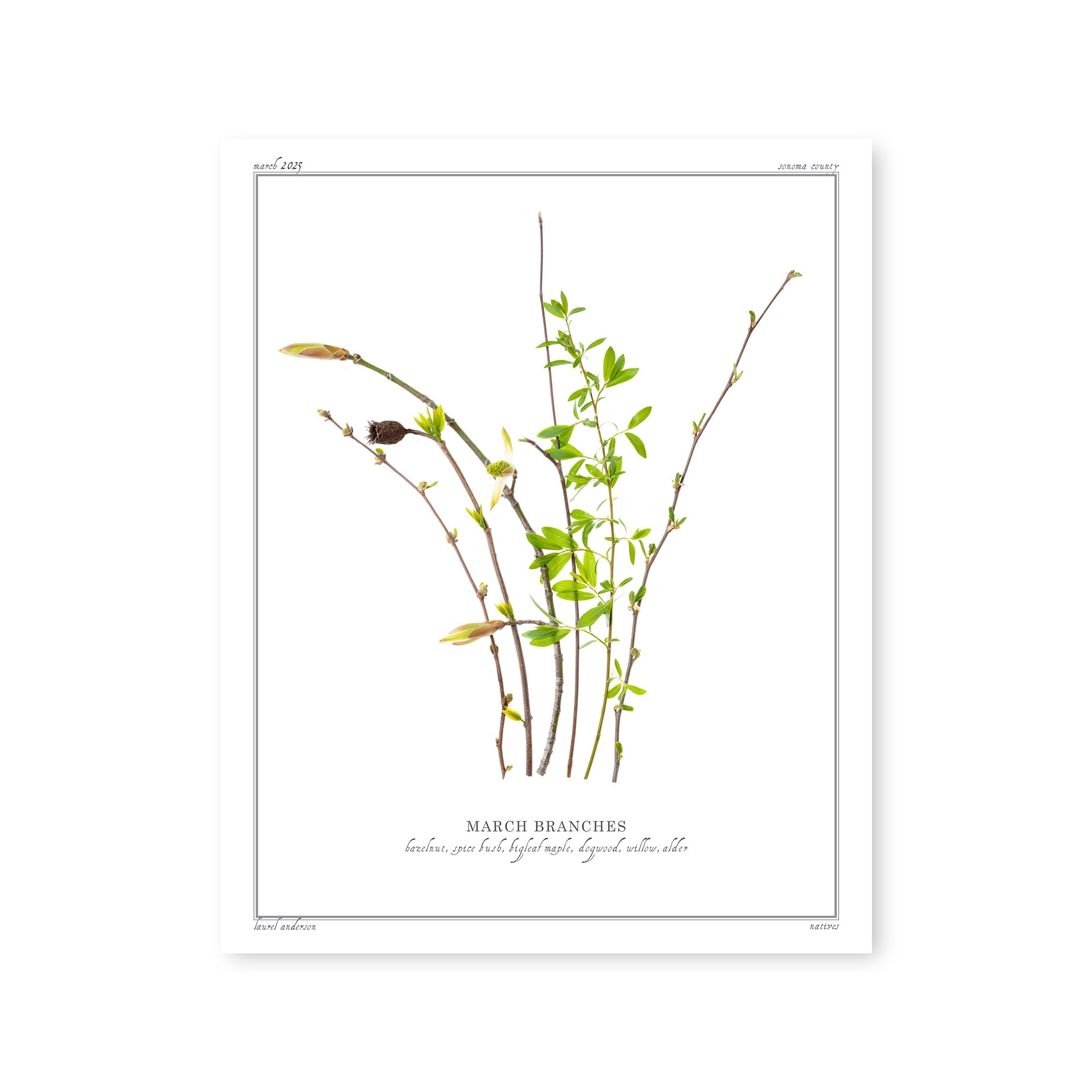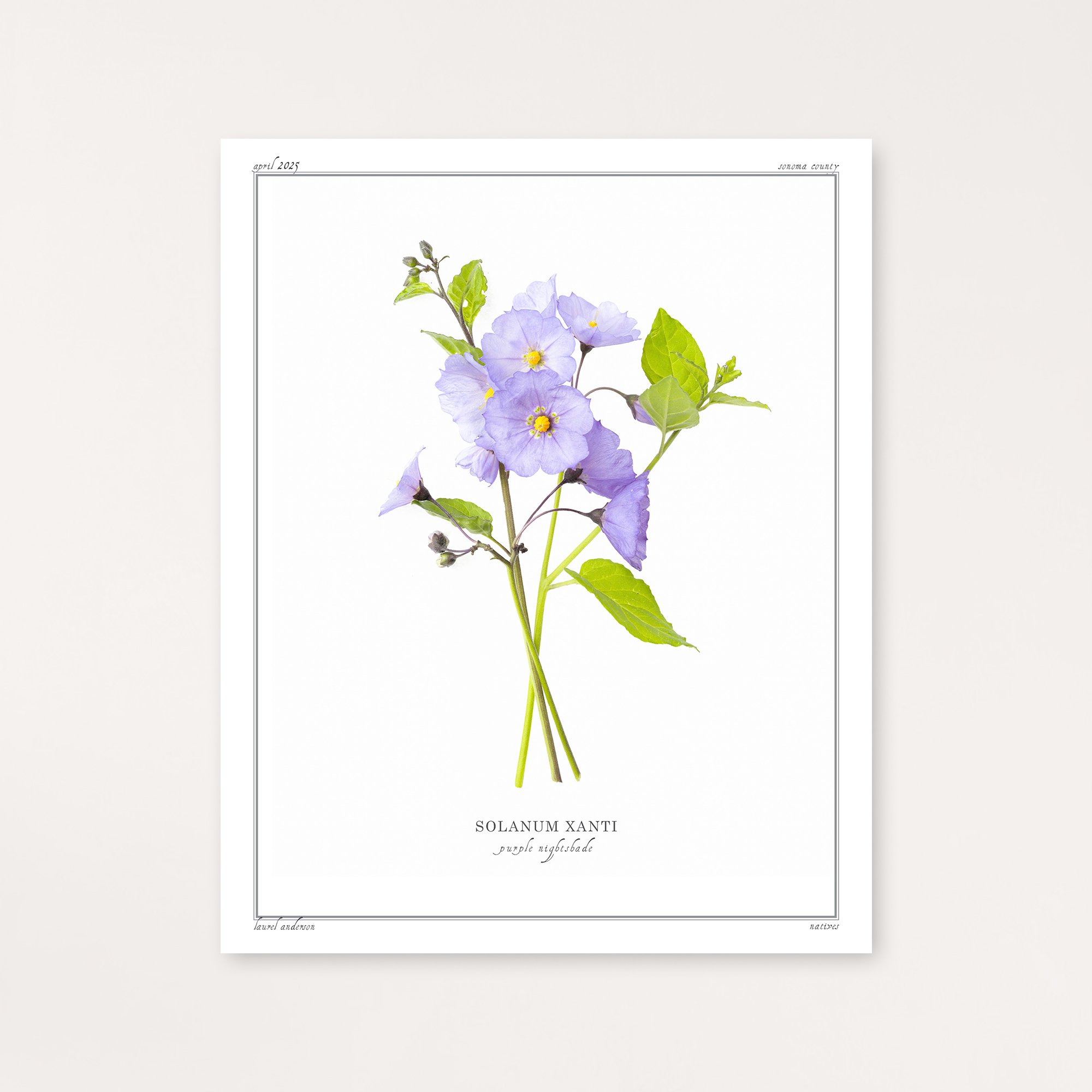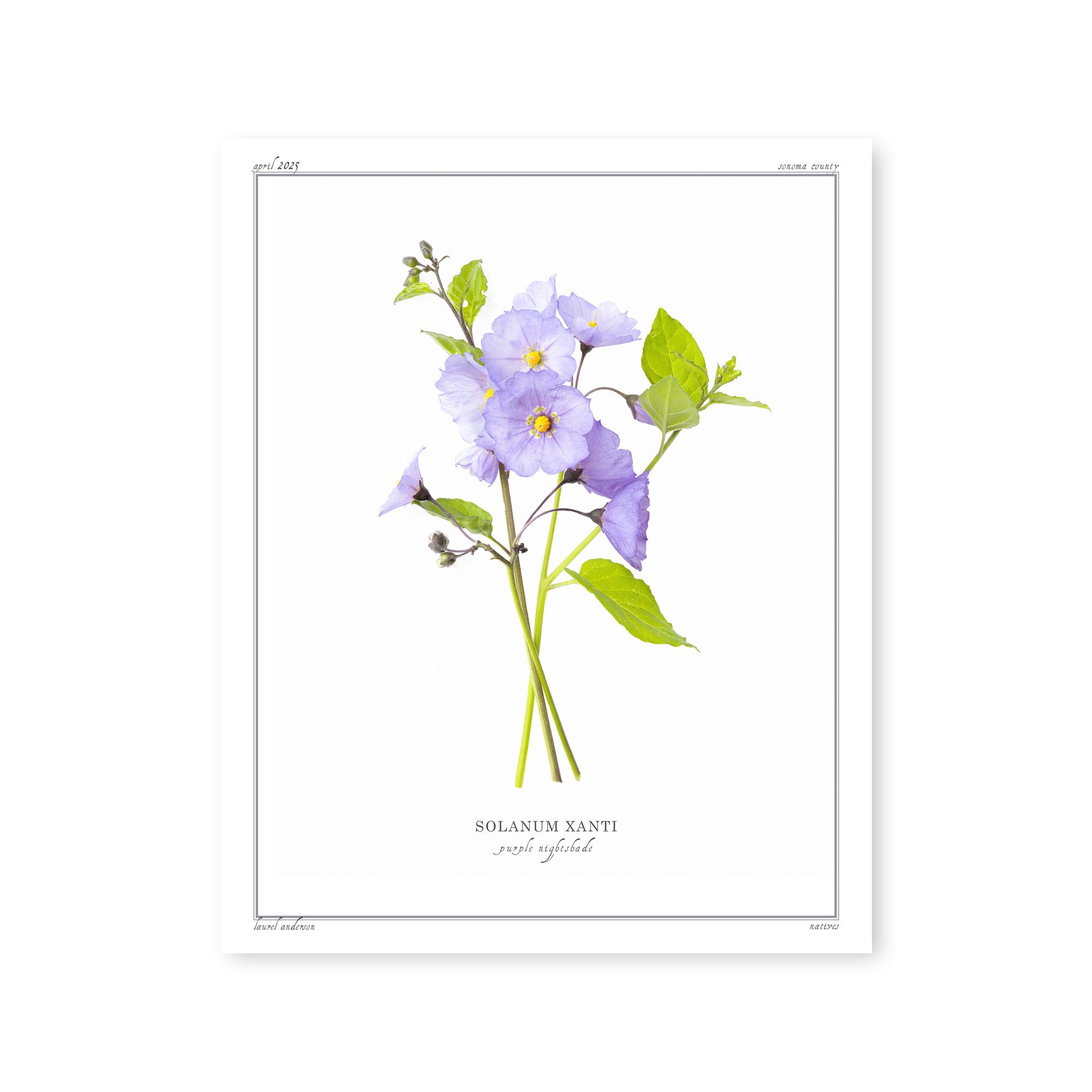 Image 1 of 2
Image 1 of 2

 Image 2 of 2
Image 2 of 2



March Branches
These six native species—Beaked Hazelnut (Corylus cornuta var. californica), Salix lasiolepis (Arroyo Willow), Pacific Dogwood (Cornus nuttallii), Bigleaf Maple (Acer macrophyllum), Red Alder (Alnus rubra), and Calycanthus occidentalis (Western Spicebush)—represent the rich diversity of California's riparian woodlands and mixed forest areas.
Each plays a distinct ecological role in watershed health—from the nitrogen-fixing abilities of Red Alder that enriches forest soils to the Arroyo Willow's streambank stabilization. Their budding branches signal reawakening from California’s mild winters, and offer a critical early food source for native pollinators.
Indigenous peoples utilized these trees and shrubs comprehensively—Hazelnut provided both nutritional nuts and flexible branches for basketry, while many tribes used Bigleaf Maple's sweet sap. The red inner bark of Pacific Dogwood and the aromatic qualities of Western Spicebush served medicinal purposes across various tribal traditions.
These six native species are great examples of the intricate ecological partnerships that have evolved over thousands of years in California's diverse habitats, connecting the realms of water, soil, wildlife, and human culture.
Each print is made by the artist using archival quality pigment ink on Moab's Entrada Rag Bright 300 paper.
These six native species—Beaked Hazelnut (Corylus cornuta var. californica), Salix lasiolepis (Arroyo Willow), Pacific Dogwood (Cornus nuttallii), Bigleaf Maple (Acer macrophyllum), Red Alder (Alnus rubra), and Calycanthus occidentalis (Western Spicebush)—represent the rich diversity of California's riparian woodlands and mixed forest areas.
Each plays a distinct ecological role in watershed health—from the nitrogen-fixing abilities of Red Alder that enriches forest soils to the Arroyo Willow's streambank stabilization. Their budding branches signal reawakening from California’s mild winters, and offer a critical early food source for native pollinators.
Indigenous peoples utilized these trees and shrubs comprehensively—Hazelnut provided both nutritional nuts and flexible branches for basketry, while many tribes used Bigleaf Maple's sweet sap. The red inner bark of Pacific Dogwood and the aromatic qualities of Western Spicebush served medicinal purposes across various tribal traditions.
These six native species are great examples of the intricate ecological partnerships that have evolved over thousands of years in California's diverse habitats, connecting the realms of water, soil, wildlife, and human culture.
Each print is made by the artist using archival quality pigment ink on Moab's Entrada Rag Bright 300 paper.






